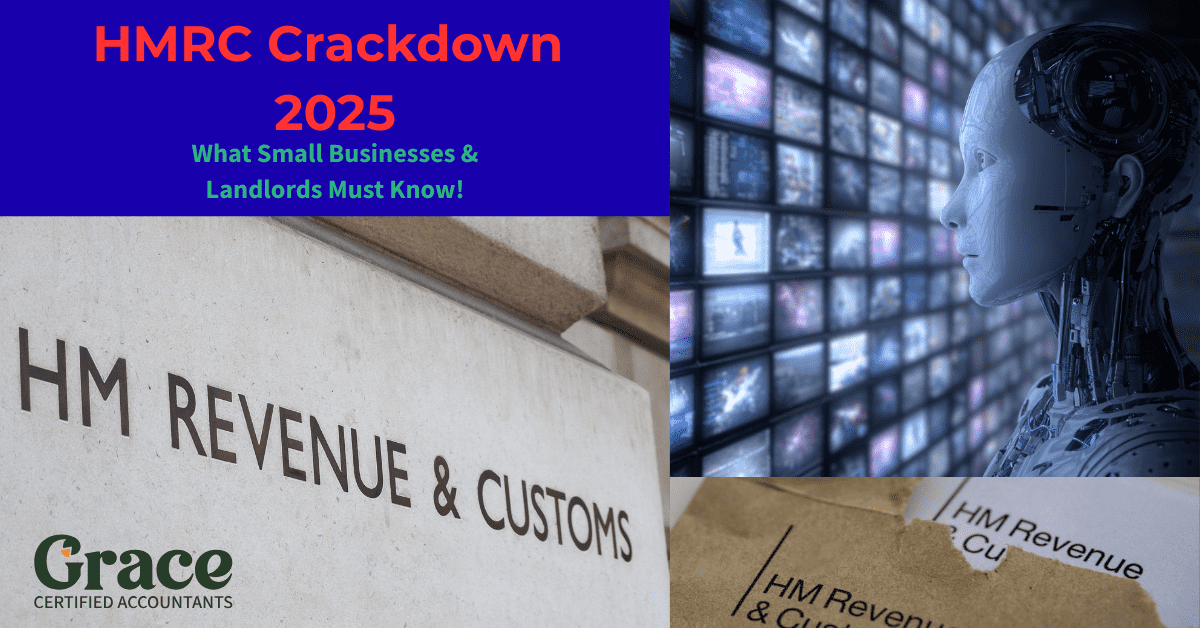HMRC’s latest annual report is a clear warning. The Tax authority is stepping up compliance in 2025, with more staff, better technology, and tougher enforcement. If you’re Self-employed, a Landlord, or run a limited company, you need to know what this means for you.
🎥 Prefer to watch instead? Here’s my full breakdown of HMRC’s 2025 crackdown and what it means for small businesses and landlords:
The Numbers You Can’t Ignore
- £875.9bn collected in tax last year (up 3.9%).
- £46.8bn tax gap – the amount HMRC says is missing.
- 5,500 new compliance officers and 2,400 debt management staff hired.
- AI systems now scanning for errors and fraud.
- 91% conviction rate in criminal cases.
Who HMRC Is Targeting
- Small businesses – the biggest source of the tax gap.
- Landlords – especially undeclared rental income.
- Directors – phoenix companies and disguised remuneration schemes.
- Employers – underpaid minimum wage or incorrect payroll.
What It Means for You
- Sloppy records are no longer safe. AI will pick up patterns you think are “too small to notice.”
- Debt collection is faster. Ignore HMRC letters, and you’ll face calls and visits sooner.
- Digital is here to stay. Nearly 30 million VAT returns now go through Making Tax Digital. If you’re not sure how MTD affects you, take a look at my guide: Making Tax Digital – A Beginner’s Guide for the Self Employed
- Errors look like fraud. An innocent mistake can still bring penalties and stress.
How to Protect Yourself
- Keep separate business and personal accounts.
- Record expenses in real time, not months later. For a full breakdown of what you can and can’t claim, read my article: Business Expenses – What You Can and Can’t Claim (UK 2025
- File on time – late Returns are an easy penalty win for HMRC.
- Get Professional advice before making big financial moves (selling property, Gifting assets, paying yourself from your company).
HMRC isn’t waiting anymore. The message is simple: get your records in order now, or risk being part of the next £48bn they “Protect” from fraud and error.
Source
Figures taken from HMRC Annual Report and Accounts 2024–25 – Executive Summary.
